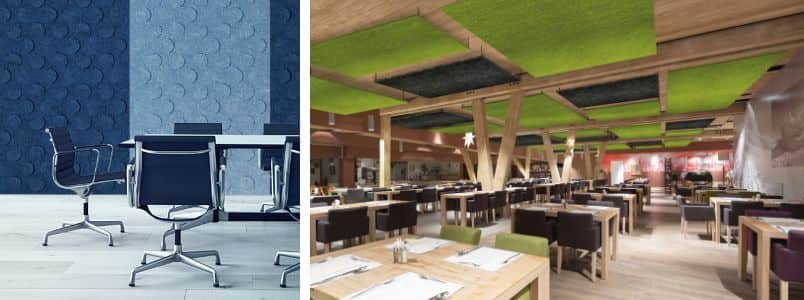Enhance Your Environment: Acoustic Solutions for each Area
Enhance Your Environment: Acoustic Solutions for each Area
Blog Article
Attain Perfect Consistency in your house With Efficient Soundproofing Techniques for Optimal Acoustics
Developing a setting of best harmony in your home entails even more than just the visual appeals of decor and layout. Soundproofing plays a critical function in accomplishing optimal acoustics, affecting the method we experience and interact with our home. By recognizing the basics of soundproofing, identifying resources of noise disruptions, choosing appropriate products, and applying tried and tested techniques, you can transform your home right into a shelter of serenity where audio improves as opposed to interrupts. The journey to understanding soundproofing techniques for ideal acoustics starts with a thoughtful approach that stabilizes functionality and convenience, resulting in an immersive acoustic experience that really integrates with your lifestyle.

Understanding Soundproofing Basics
Soundproofing is rooted in the understanding of just how sound waves travel and connect with different materials. The trick to successful soundproofing lies in interfering with or taking in these sound waves to decrease their transmission from one area to another.
Recognizing the idea of sound transmission course (STC) scores is crucial in picking the best products for soundproofing. The STC score measures just how well a material can lower air-borne sound transmission with it, with greater STC scores indicating much better soundproofing abilities. Additionally, thinking about the effect of effect insulation course (IIC) ratings for reducing impact sound, such as steps or furniture moving, can further improve the efficiency of soundproofing solutions.
Evaluating Noise Sources in your house
Structure upon the foundational understanding of soundproofing concepts, an important action in efficient sound mitigation within your home includes recognizing and evaluating the numerous sources of unwanted sound. Sound sources can be categorized right into 2 main types: air-borne sound, that includes noises like discussions, songs, and television, and effect sound, such as footprints or items being dropped. To examine these resources, consider the different spaces in your house and the tasks that generally happen in each. The living room may have much more airborne noise from enjoyment systems, while effect sound from footprints might be a problem in locations with tough floor covering like corridors or cooking areas.
Furthermore, think about external sources of sound, such as website traffic, next-door neighbors, or close-by building, which can also impact the acoustics within your home. acoustic solutions. Recognizing these resources will help you focus on areas for soundproofing and choose one of the most reliable options. By identifying the specific sound sources in your home, you can customize your soundproofing efforts to achieve optimum results and create an extra relaxed and harmonious living setting
Choosing the Right Soundproofing Materials
When picking soundproofing materials for your home, it is important to focus on effectiveness and compatibility with your certain sound issues. Take into consideration factors such as the type of sound you are attempting to block, the level of soundproofing required, and the appearances of the materials to ensure they mix flawlessly into your space.
One usual product for soundproofing is acoustic foam. This light-weight and versatile material is excellent for soaking up mid to high-frequency sounds, making it optimal for songs areas, home cinemas, or workplaces. Another option is mass-loaded vinyl, which works in shutting out low-frequency sounds like website traffic or equipment sounds. For walls and ceilings, soundproof drywall is a popular choice because of its capability to minimize sound transmission in between spaces.
Curtains and rugs made from sound-absorbing materials are also effective in dampening noise, particularly in locations with tough surface areas that trigger noise to bounce around. Remember, the key to successful soundproofing is picking the appropriate products that address your particular sound concerns while enhancing the overall convenience and acoustics of your home.
Implementing Soundproofing Strategies
To effectively apply soundproofing strategies in your home, it is critical to begin by analyzing the areas that are most at risk to noise seepage. Usual sources of noise can consist of exterior sounds from traffic, neighbors, click for source or neighboring building and construction, in addition to internal resources like home appliances, plumbing, and entertainment systems. As soon as you have identified these locations, you can begin implementing soundproofing remedies tailored to each certain area.

For more considerable sound decrease, think about mounting soundproof drywall, double-glazed home windows, or resistant networks to separate resonances. In addition, repositioning furnishings, including shelfs, or including sound-absorbing products can better boost the acoustics of an area. By purposefully applying these soundproofing strategies, you can develop a quieter and even more relaxed living setting in your my sources house.
Preserving and Improving Acoustic Atmosphere
After executing soundproofing see it here methods to deal with noise seepage in your house, the emphasis moves towards maintaining and boosting the acoustic setting to make sure a constantly serene space. To maintain optimal acoustics, regularly evaluate soundproofing products for deterioration, ensuring they continue to be efficient in blocking unwanted sound. Keep doors and windows effectively secured to protect against audio leak and think about including weather condition stripping or door moves for extra soundproofing.
Improving the acoustic environment can entail calculated placement of furnishings, rugs, and drapes to moisten audio representations and echoes. Making use of sound-absorbing materials such as acoustic panels or foam can better improve the overall audio quality in your house. acoustic solutions. Additionally, including soft furnishings like paddings and blankets can help in reducing sound reverberation, developing a much more positive auditory experience
In addition, buying sound-absorbing décor aspects like bookshelves, tapestries, or plants can contribute to a well balanced acoustic environment. Consistently decluttering your area can additionally avoid acoustic waves from bouncing off surfaces, inevitably improving the general acoustics of your home. By continually preserving and boosting your acoustic environment, you can create an unified and serene home for yourself and your family members.
Conclusion
Finally, attaining perfect harmony in your house via effective soundproofing techniques is necessary for optimal acoustics. By understanding soundproofing fundamentals, analyzing sound sources, choosing the ideal products, applying techniques, and maintaining the acoustic atmosphere, you can produce a calm and enjoyable home complimentary from undesirable sound disruptions. Focusing on soundproofing initiatives can significantly improve the overall lifestyle in your home.
Report this page